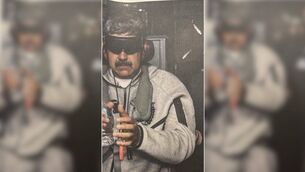Scientists find marine life thriving on Second World War explosives in sea

An undersea submersible has spotted crabs, worms and fish thriving on the surfaces of Second World War explosives thought to be toxic to marine life.
At a former weapons dump site in the Baltic Sea, scientists found more creatures living on top of warheads than in the surrounding seabed.
“We were prepared to see significantly lower numbers of all kinds of animals,” said study author Andrey Vedenin, from the Senckenberg Research Institute in Germany.
“But it turned out the opposite.”
Past conflicts have left their mark on the world’s oceans, Mr Vedenin said.
German waters alone contain about 1.6 million tons (1.5 million metric tonnes) of dumped weapons, mostly from the two world wars in the 20th century.
Dumped relics can contain nuclear and chemical remnants as well as explosives such as TNT.
It is the latest example of wildlife flourishing in polluted sites.
Previous research has shown shipwrecks and former weapons complexes teeming with biodiversity.

In the new study, researchers filmed networks of anemones, starfish and other underwater life in the Bay of Lubeck off the coast of Germany.
They were lurking on pieces of V-1 flying bombs used by Nazi Germany.
“Normally, one does not study the ecology of bombs,” said University of Georgia ecologist James Porter, who was not involved with the research.
The research was published in the journal Communications Earth and Environment.
Why would sea creatures make their home on contaminated weapons?
They could be drawn to the hard surfaces, which are in short supply in the Baltic Sea.
The seafloor is mainly a flat bed of mud and sand because stones and boulders were fished out of the water for construction in the 1800s and 1900s, Mr Vedenin said.
The area is also fairly isolated from human activity because of the chemicals, creating a somewhat protective bubble for the creatures to thrive despite some toxic trade-offs.
Scientists hope to calculate how much contamination was absorbed by sea life.
Another important next step is to see what happens after the creatures settle and whether they are capable of reproducing, Mr Porter said.
Studies such as these are a testament to how nature takes advantage of human leftovers, flipping the script to survive, said marine conservation biologist David Johnston, from Duke University.

He recently mapped sunken First World War ships that have become habitats for wildlife along the Potomac River in Maryland.
“I think it’s a really cool testimony to the strength of life,” Mr Johnston said.











